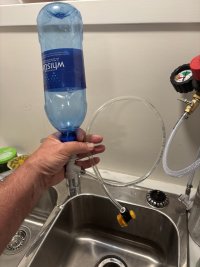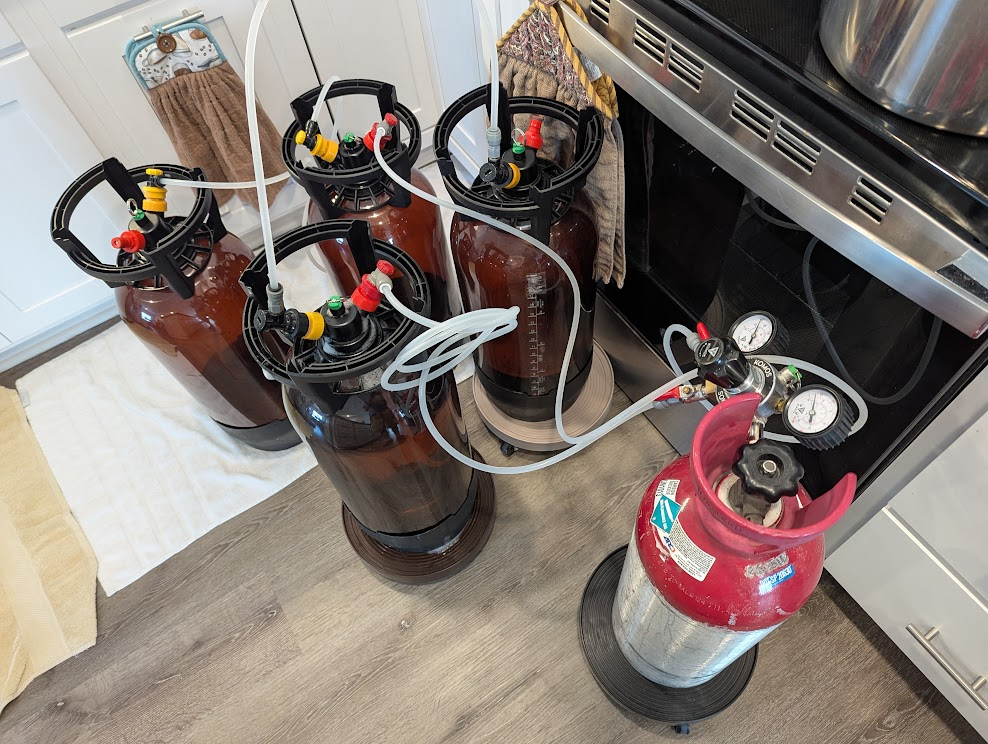- Joined
- May 6, 2025
- Messages
- 286
- Reaction score
- 221
I"m sure many folk aleady do this, but today's discovery was fun, so thought I'd share.
I've started sterilizing my small kegs by filling them with starsan and pushing it all through with co2. Using fermentation gas when I can, otherwise with bottle gas.
But I know that when I fill the keg with starsan, there remains headspace filled with air. I pour starsan so the keg is overflowing, then put on the lid, but there is always a bit of space I can't quite fill. I can hear it sloshing in the keg.
So I used the liquid post to get at that last annoying bit of head space.
I have a post with pop bottle threads that I use to make soda water in PET bottles. Fill a pop bottle halfway with starsan. screw on the post. Attach a quick disconnect. run a line to a liquid quick disconnect. Snap this onto the keg's liquid post. Lift up the PRV and twist it so it stays open.
Hold the pop bottle above the keg and squeeze. Starsan runs down into the keg. Eventually it comes pouring out the PRV. While it is pouring out, close the PRV.
I was surprised how much empty head space there was. It took half a liter. That's a lot of air that I don't want in my keg. And that I won't any more.
Satisfying.
I've started sterilizing my small kegs by filling them with starsan and pushing it all through with co2. Using fermentation gas when I can, otherwise with bottle gas.
But I know that when I fill the keg with starsan, there remains headspace filled with air. I pour starsan so the keg is overflowing, then put on the lid, but there is always a bit of space I can't quite fill. I can hear it sloshing in the keg.
So I used the liquid post to get at that last annoying bit of head space.
I have a post with pop bottle threads that I use to make soda water in PET bottles. Fill a pop bottle halfway with starsan. screw on the post. Attach a quick disconnect. run a line to a liquid quick disconnect. Snap this onto the keg's liquid post. Lift up the PRV and twist it so it stays open.
Hold the pop bottle above the keg and squeeze. Starsan runs down into the keg. Eventually it comes pouring out the PRV. While it is pouring out, close the PRV.
I was surprised how much empty head space there was. It took half a liter. That's a lot of air that I don't want in my keg. And that I won't any more.
Satisfying.





























![Craft A Brew - Safale S-04 Dry Yeast - Fermentis - English Ale Dry Yeast - For English and American Ales and Hard Apple Ciders - Ingredients for Home Brewing - Beer Making Supplies - [1 Pack]](https://m.media-amazon.com/images/I/41fVGNh6JfL._SL500_.jpg)




























